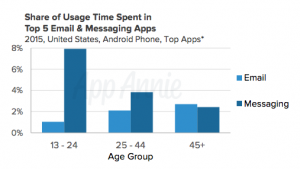November 20, 2015 Follow @FurstPerson
November 20, 2015- Communication (34%): There’s no second guessing here; the number one thing that makes a positive candidate experience for the candidate is communication. This doesn’t mean personally checking in with the candidate every to tell them nothing of note, but keeping them in the loop during the hiring process, as well as being readily available to answer any questions they might have, is the most critical thing you can do to create a good candidate experience.
- Being Told No (28%): You know that your candidates want to hear an answer about the position they applied for. And if you’ve been following our previous blog posts you know that candidates want to hear answer regardless of what that answer is. There are candidates out there who have applied for jobs years ago and never heard anything either way, but even if it’s safe to assume they didn’t get the position it’s still of the upmost importance to tell candidates when they didn’t get the job. They might “take a hint” if there’s no communication, but that reflects poorly on your hiring process and organization, and can come back to haunt you if candidates leave negative feedback about your hiring process to places such as Glassdoor and LinkedIn.
- Hiring Process Steps (21%): A “just how deep does the rabbit hole go?” type of situation that candidates will want the answer to. Being able to inform a candidate up front both how long the interview process should take and the steps involved help the candidate budget their time for the hiring process to put their best foot forward, while also giving them an understanding of whether or not they should follow up with you or wait for the next steps.
- Human Contact (14%): Getting an automated email from an organization that a candidate’s application has been received is a fairly common practice, but having actual human contact thereafter is less so – even though that’s something candidates expect from a good candidate experience. Unless the candidate is unqualified right off the get go it does good to follow up with your job applicants. This is especially important if you’ve already spoken to them once. Nothing is worse than a disappearing act as far as the candidate is concerned, and that can come in a number of ways. Make sure you don’t do that by keeping in touch with your candidates after you’ve already made touch with them.
- Quick Replies (13%): It’s not enough to just touch base with a job applicant, you must also do so in a timely manner. Don’t wait for months on end to tell them they didn’t get the job, and don’t take a week to respond to a follow up email or phone call. Even if there’s nothing new to report, when a candidate reaches out, reciprocate – and do so quickly.
- Easy-to-Understand Job Description (12%): Take a look at your job descriptions for your applications – do you understand them? If the answer is “no” you have a problem right off the bat, but even if you say “yes” there still might be an issue. Remember that your applicants are going to be looking at your job descriptions with a fairly blind eye, so making it as clear and concise as possible is crucial to a good experience.
- Updates (10%): This relates to some of the things we’ve been saying above, but keep your candidates in the loop. The fact that this is mentioned so often by surveyed candidates speaks to how important it is to their candidate experience, and should play a factor in how often you choose to keep in touch with them. Let them know what’s going on, what the next steps are, or if they should just sit tight. It takes only a couple minutes and it goes a long way.
- Application Confirmation (9%): Remember when we said above that a confirmation email (even an automated one) is usually implied to happen? Well imagine how confused an applicant would be if it didn’t. They might assume you never got their application, or that they’ve already been disqualified from consideration. If you, for whatever reason, don’t have an automated application reply process in place, get one!
- Short Application Form (7%): We spoke on this recently in a webinar about work at home hiring, but seeing it on this list serves as a good reminder for just how important streamlining your application forms can be. Don’t look to get a bunch of information from your candidate right off the bat to initiate the application process – it will deter them and make it harder for you to sieve through the applicants you get in. Keep it simple – get the information you need to establish a connection and build out from there.
Business & Finance Articles on Business 2 Community
(43)





